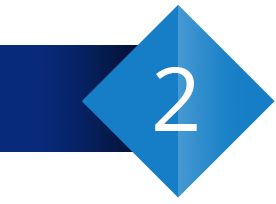One of the greatest benefits of using a translation memory system (TMS) is reuse; translate your content once into multiple languages and then leverage that asset for other projects later. If you’re already using a TMS, you know that these tools offer sophisticated functionality: you set the parameters to factor context into the word matching, program custom segmentation, conduct quality checks on the translation, etc., and the TMS does the work.
As effective as TMS tools are, their performance relies heavily on what happens with the content before it gets to translation, primarily in the content creation stage. Authoring practices and content creation methods have an enormous impact on localization success: affecting quality, time, and/or cost.
Not surprisingly, many companies struggle with these common localization pain points: slow turnaround times, quality problems in translated content, and the high cost of the entire process. You can greatly mitigate these issues by optimizing content at the authoring stage. We’ve all heard the adage, “garbage in, garbage out,” but the opposite is also true: improve the source content and you improve localization.
By following just a few best practices during the authoring process, you begin to see how achieving quality in the source content produces better results in translation. At the top of the list are: following a glossary of approved terminology; applying style guide rules; and adopting a content management system (CMS) to manage your content.

Standardize your terms
Writers can increase consistency if they use a glossary of approved terminology in their content, especially if there are multiple teams — some of whom are non-native English speakers. Poor writing is often the result of multiple and inconsistent language structures, vocabulary, and syntax. For example, should we “begin,” “start,” or “commence” an activity? Should your published content exist on a “website,” a “web site” or a “web page?” Do you prefer internet to be spelled “Internet?” “Email” or the antiquated “e mail?”
Many hands contributing to the content bring the risk of unnecessary variation. Having lots of options makes colorful prose in fiction novels, but in the business of localization, consistency is preferable. Using a glossary of preferred terms ensures that your writers reach this consistency.
The bottom line is that word choice plays heavily in the success of the eventual translation. If the goal in localization is to optimize word matching with the TMS, then variation quickly erodes the 100% matches residing in the company’s translation memory databases. Remember that 100% matches in translation produce a faster turnaround time, considerably lower costs, and improved overall quality through consistency.

Enforce style rules
Applying style guide rules during the authoring stage also improves the quality of both source content and the corresponding translation. To illustrate the power of a style guide, consider this common phrase:
Please call the System Admin if more information is required.
Using this example, let’s apply a few basic style guide rules.
- Condition precedes action
- Remove passive voice
- Remove unnecessary words
- Apply approved terminology
When we apply these rules, along with the glossary of terms, we end up with a sentence that looks more like this:
For more information, contact your system administrator.
For one Fortune 500 company, a content audit found that this simple phrase appeared in 98 different variations in their content. This meant that each time they translated their content, this string of words fell short of a 100% match in their TMS — adding time and cost to the localization cycle.

Manage your source content
Driving quality into the content creation process brings us to the third recommended best practice, using a content management system (CMS) to store and manage your content. Similar to a TMS, a CMS stores content for future use: write once and reuse everywhere. Because you’re going to write the content only once and reuse it repeatedly, use your glossary and style guide to optimize content the first time.
However, not all CMS tools are created equally. While they all store reusable content and maintain the ability to publish to various output formats, some store content at a granular level: component content management systems (CCMS). For example, consider the system administrator sentence above. With a CCMS, you’re able to store this sentence as a reusable unit on its own — separate from the section or module in which it appears. This approach provides a much more flexible system, which yields significantly higher reuse rates than a standard CMS.
When you combine the power of a CCMS with a TMS, you get the best of both worlds in the area of recycled content: authoring reuse and translation reuse. Add the glossary and style guide tools into content creation and the quality of both the source and target languages improves. Employing all three of these methods leads to sending fewer words to translation and achieving a higher quality result — all with faster turnaround times and lower overall cost.

Susie Winn
Senior Consultant, Localization


